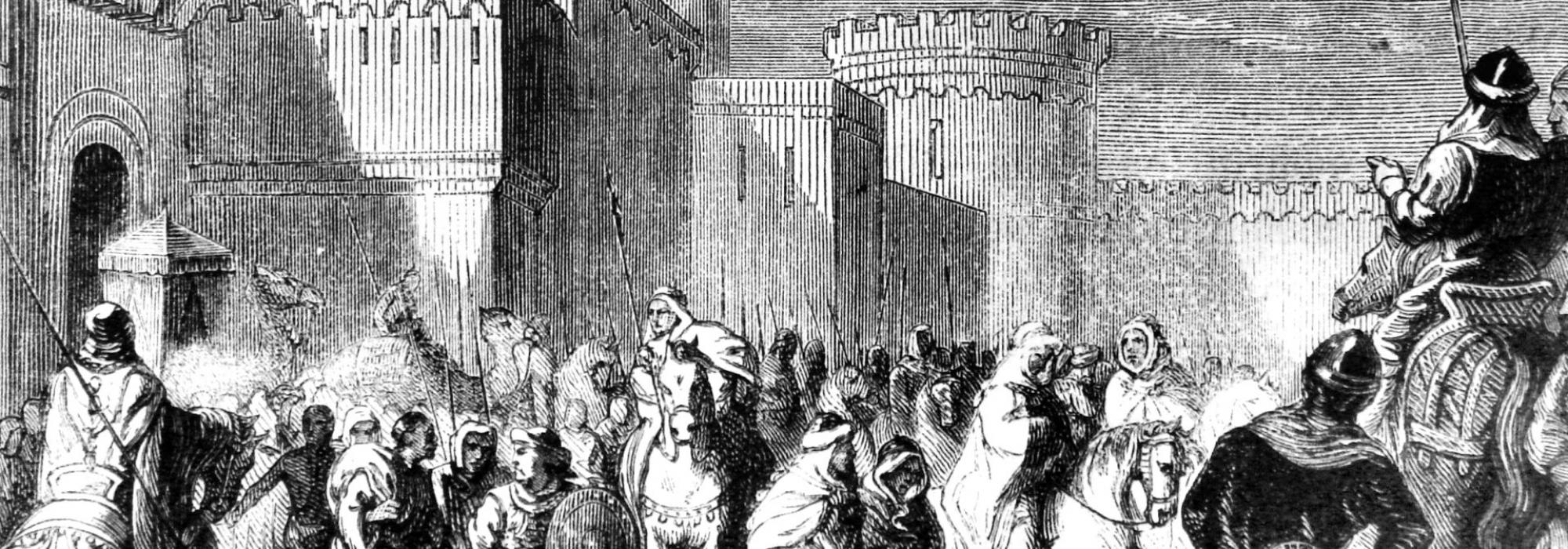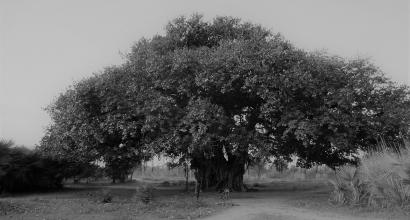Prithviraj was the last Hindu king of Delhi. It was he who originally had the Red Fort built; scholars opine that it changed due to the Islamic invasions.
Based on the story in Prithvirajraso, we learn that in the war of 1191 CE, Prithviraj set free Ghouri with a pardon after defeating him in a decisive war. Ghouri used deceit to defeat Prithviraj in the Second Battle of Tarain, after which he cruelly blinded Prithviraj by having his eyes gouged out. The story goes that Prithviraj, being inspired by his poet-friend Chand Bardayi, used the art of shooting by sound (śabdavedhi) and shot an arrow at Ghouri in his own court. However, historians have not yet been able to confirm this story with solid evidence.
However valorous and heroic our kings were, they lost everything because of misplaced magnanimity. This sort of misplaced magnanimity is a result of lethargy, complete lack of awareness, and worldly indulgences. The blind intoxication of our leaders to appear noble and chivalrous to the eyes of the world has resulted in most of the problems that our country faces. All of Nehru's antics are because of this reason. This is the fundamental reason even for Gandhi's fatal blunders. A lot of 'noble' people are emotionally finicky that others should not think that they are bad people or point out mistakes in them. Imagine what would have happened if Śrīkṛṣṇa had thought in this manner!
Muhammad bin Qasim who attacked Sind belonged to the eighth century CE. After defeating the kingdoms in and around Delhi, by the time the Slave Dynasty and the Khilji Dynasty established themselves in Delhi, it was thirteenth century CE. It took that long for the Muslims to go from attacking Sind to establishing themselves in Delhi. For close to four hundred years, the Hindus fought the Muslims and gave them a strong resistance. Therefore the Islamic administration could not grow in any significant way. Except for a few regions like Sind-Punjab, Delhi, and some neighbouring areas, they could not get much else. One can only imagine the strength of Bhārata's kṣātra, which constantly resisted the attacks of the Muslims, who were able to capture only a few places in India.
In his preface to The Struggle for Empire (Volume 5 of The History and Culture of the Indian People) K M Munshi writes:
The description given by Padmanābha in Kāhnaḍade Prabandha (c. AD 1456) of what the armies of 'Ala-ud-din Khalji did, would equally apply to the campaigns of the Turks: The conquering army burnt villages; devastated the land, plundered people's wealth, took Brahmanas, children and women of all castes captive, and flogged them with thongs and raw hide, carried a moving prison with it, and converted the prisoners into obsequious Turks.
He goes on to quote Will Durant's lines from the first volume of The Story of Civilization:
The Mohammedan conquest of India is probably the bloodiest story in history. It is a discouraging tale, for its evident moral is that civilization is a precarious thing, whose delicate complex of order and liberty, culture and peace may at any time be overthrown by barbarians invading from without or multiplying within.
Finally, Munshi writes,
And neither the ferocity nor the persistence of the invader could lead the Indians to develop the military organisation or the ruthlessness needed to match the opposing savagery. (p. xv, The Struggle for Empire. Bombay: Bharatiya Vidya Bhavan, 1957)
Our kingdoms did not establish armies that could counter the barbarity and cruelty of the invaders. We find gory depictions in literature of the situation of the people during those dark ages; parents would fear that their child would be forced to convert (to Islam) or become a slave, and so themselves would throw their son or daughter into a waterless well.
In sum, for hundreds of years (from around 9th to the 13th century CE) the Islamic kingdoms were restricted to an area in and around Delhi, no more than a hundred and fifty kilometer radius. A few honest historians/scholars and the history books of the Bharatiya Vidya Bhavan proclaim this truth. Typically, Islam's barbarity and terrorism have been given an exalted status of empire-building. But it was not so; Indians were constantly battling the Muslim invaders. And India is a huge land. Indians put up a strong resistance against the Muslims in spite of the fact that there was in-fighting among the Hindu kingdoms, even when there was no pan-Indian empire, and regardless of social problems plaguing the land.
The kings of India were so drowned in their tolerance and magnanimity that they barely realized how wickedly the Muslims deal with non-Muslims and how dangerous they can be. Without bothering about the sort of cruelty inflicted on North India by the Muslims, kings from other parts of India themselves gave permission to the invaders to settle in their lands; not only that, they gave them a free hand to practice their religion.
With a view to protect Sanātana-dharma, when the Gurjara-Pratiharas were tirelessly battling the Muslims in the borders, opposing the injustice of the Arabian traders, and championing the cause of local traders, the Rashtrakutas, their political rivals, were giving unreasonable privileges and subsidies to the selfsame Arabian Muslim traders! Even before the Muslims ran down the Arabian peninsula (completely destroying the native culture), a few sects of Islam had come to India and settled down. Our people never stopped them from professing their faith or their zealous acts of conversion of the locals.
Jayasimhasiddharaja of Gujarat, in the period between 1094 and 1143 CE, had actually punished a few of his own citizens because they came in the way of Islamic conversions! Conversions were taking place voluntarily during the reign of the Yadavas due to a Sufi saint Mamin Arif, who lived in Devagiri in Southern India. Similarly, a Sufi from Iran, Jalaluddin Danjaravan also assisted in religious conversions. Sarangadeva of Gujarat (1294 to 1297 CE) offered money for the construction of mosques. The main archaka of the Somanatha temple had also blessed this endeavour. For a number of years, the Muslims were on a rampage destroying temples in Varanasi and other sacred spots. But the Hindu kings made opportunities for the Muslims to build mosques!
In Bukkadevaraya's time, there was a mosque built in the Vijayanagara kingdom! There was a copy of the Qur'an kept in the Vijayanagara court. In a monarchial system, the king must always get universal respect of the highest order. What shall we say about the thought process that these Hindu kings keep a copy of the Qur'an with a view that even if the Muslims don't wish to bow down to the king, at least they will bow down if their holy book was kept there!
According to our Dharma-śāstras, in the highest court, the wisdom of the king prevails over words of the law. Where is the greatness of such fundamental concepts and where is the blind faith of the religious bigots who are wedded to a book!
"Once the Delhi Sultanate of the muslims was established firmly and the political strength of Islam became stronger, in all those places religious conversion became a political inevitability with no options. Hindus completely lost their freedom to worship their deities. Rules were instituted to perpetrate violence and humiliation on them."
This reached such a nadir that zamindars (landlords) had to give away half of their produce as tax to the emperor. This is upheld as something honorable by the 'secular' historians by using crafty arguments; they have even claimed that the muslim rulers were unjust merely to the landlords and not to the farmers. Irrespective of who grows the crops, the farmer or the landlord, ultimately half the produce was mercilessly snatched away by the sultan; what is the poor farmer left with? The 'secular' historians have been making such intelligent foolish statements blinded by their ideology.















































